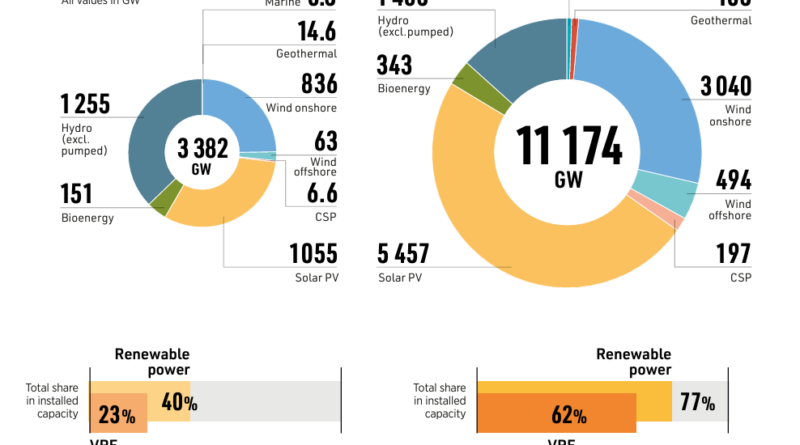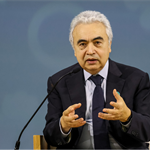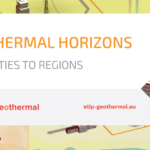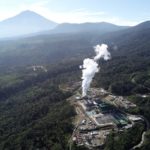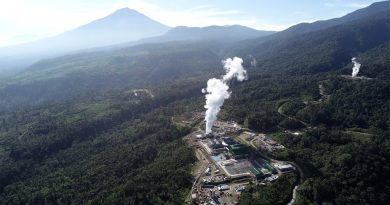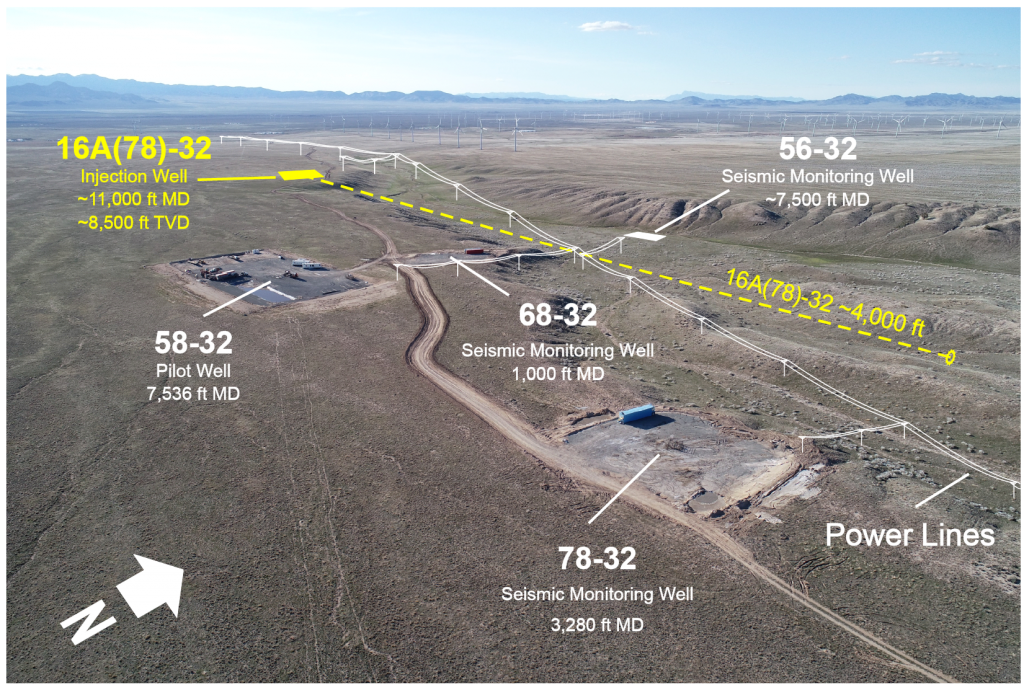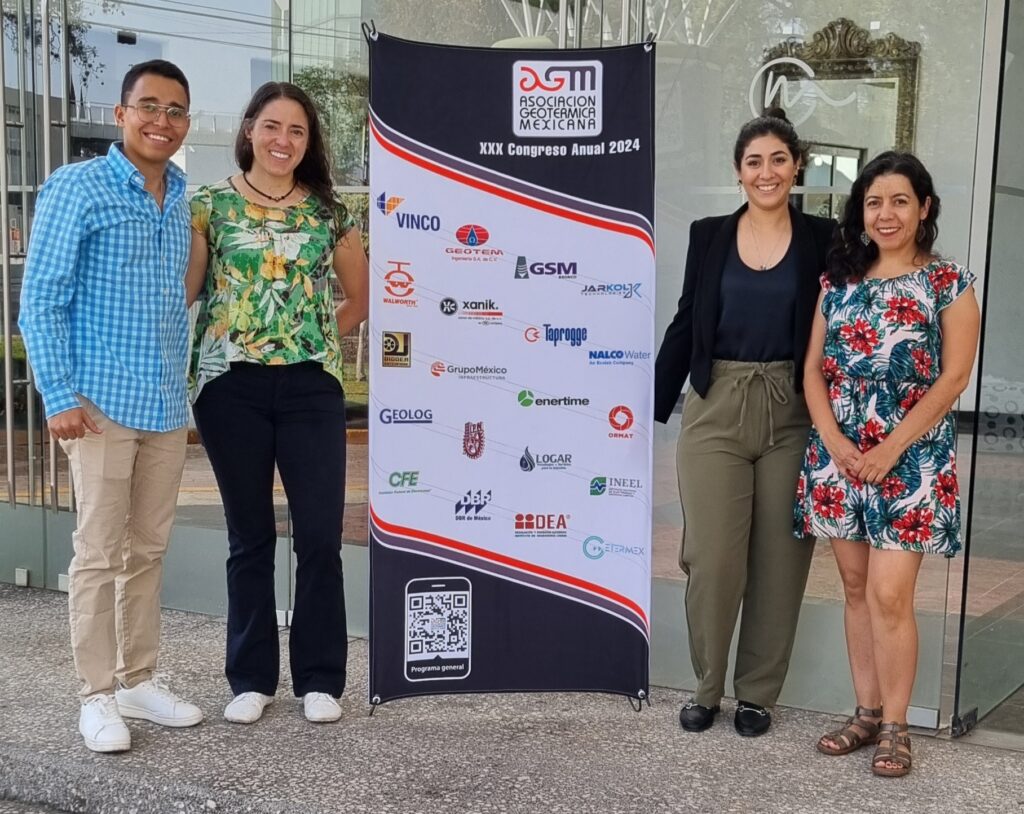The COP28 pledge to triple up by 2030 and implications for geothermal
Energy Disrupter
More than 118 countries have pledged during COP28 to triple renewable capacity by 2030. What is the role do we expect geothermal to play in this effort?
One of the biggest stories and most widely supported initiatives coming out of the 2023 UN Climate Change Conference (CO28) in Dubai, UAE is the pledge to triple the world’s installed renewable energy capacity by 2030 to limit global temperature rise to 1.5°C. The pledge has since won the support of 118 countries, with some even pushing to make the deal global.
Tripling the world’s renewable energy production to 11,000 GW by 2030, coupled with doubling energy efficiency, is the most impactful action to rapidly decarbonize this decade, as highlighted in the pre-COP report by the GRA, the COP28 Presidency and IRENA. In this scale-up, solar and wind will have the largest role to play, but all renewable energy technologies will be essential.
“117 countries committing to tripling global renewables by 2030 is a huge achievement at COP28. This pledge signals the start of a new energy paradigm and a once in a generation opportunity to transition to a clean, secure and just energy system,” said Bruce Douglas, CEO of Global Renewables Alliance (GRA).
“We now need to turn this ambition into action and hold policy makers accountable to deliver on their commitments. To get there, we need the tripling to be reflected in updated NDCs, with increased national targets and rapid implementation across the key enablers.”
The GRA represents the leading international industry players and provides a unified renewable energy voice. Comprised of founding members the Global Wind Energy Council, the Global Solar Council, the International Hydropower Association, the International Geothermal Association, the Long Duration Energy Storage Council and the Green Hydrogen Organisation, the Alliance aims to increase ambition and accelerate the uptake of renewable energy across the world.
Turning ambition to action
Action and accountability must be the next steps if this pledge is to deliver on its high ambitions. To rapidly accelerate deployment, permitting must be streamlined, supply chains strengthened, grids expanded, and finance must be unlocked. This is the only way that ambition can become reality.
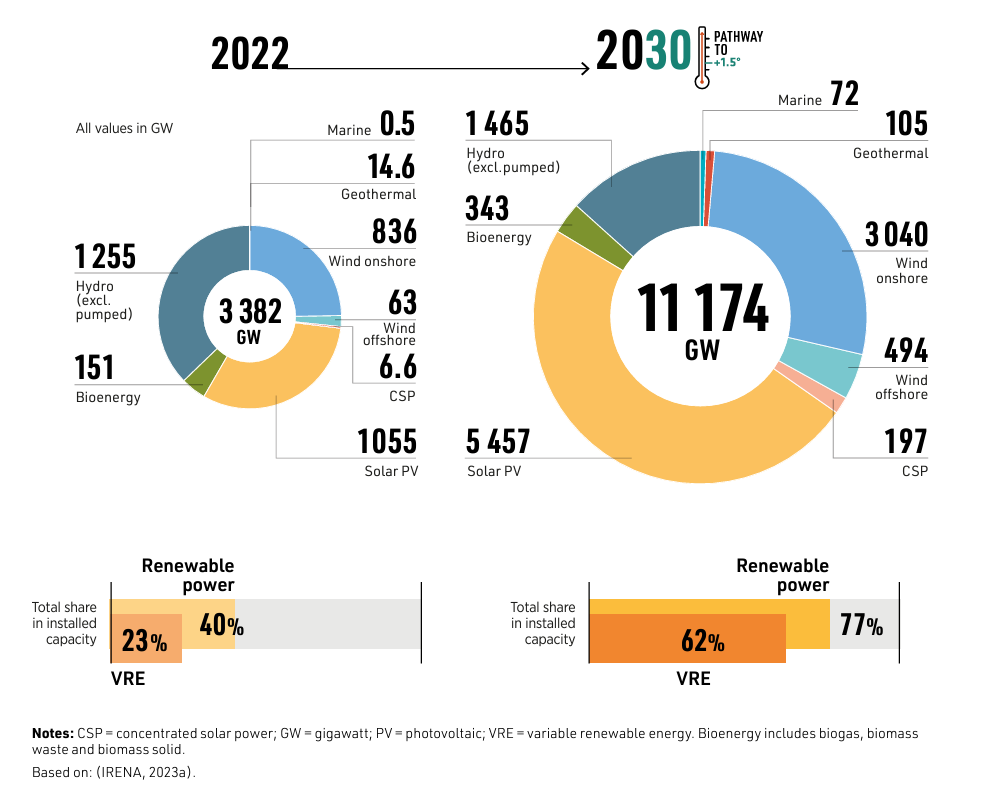
Genuine action on delivering renewable energy capacity will ensure a just and inclusive energy transition that ensures gains from the energy transition are equitably distributed. This must include multilateral North-South partnerships to support local value creation in developing economies, as well as mobilizing access to low-cost financing and transition-related needs, such as grid expansion.
The case for geothermal
Currently, geothermal accounts for only about 0.5% of the total installed renewable power capacity. However, this is a massive under-representation of the contributions and further potential that geothermal has for decarbonization. Beyond the 16 GW of installed geothermal power capacity as of the end of 2022, there is currently also about 173 GW of installed geothermal heating capacity according to a recent “Facts for Future” webinar episode by the International Geothermal Association (IGA).
China has long led the way in geothermal heating and cooling and will likely continue to do so, but there are hundreds of geothermal heating and cooling projects being developed in parallel and at different levels of scale all over Europe, North America, and South America. Standalone geothermal cooling has also started to catch attention, particularly with the new G2COOL project in Masdar City in UAE – another of the big announcements coming out of COP28.
Taking both into consideration, the geothermal sector has its own “triple up” goals of 48 GWe of capacity for the power sector and 520 GWt of capacity for the heating and cooling sector, as wonderfully summarized by the IGA.
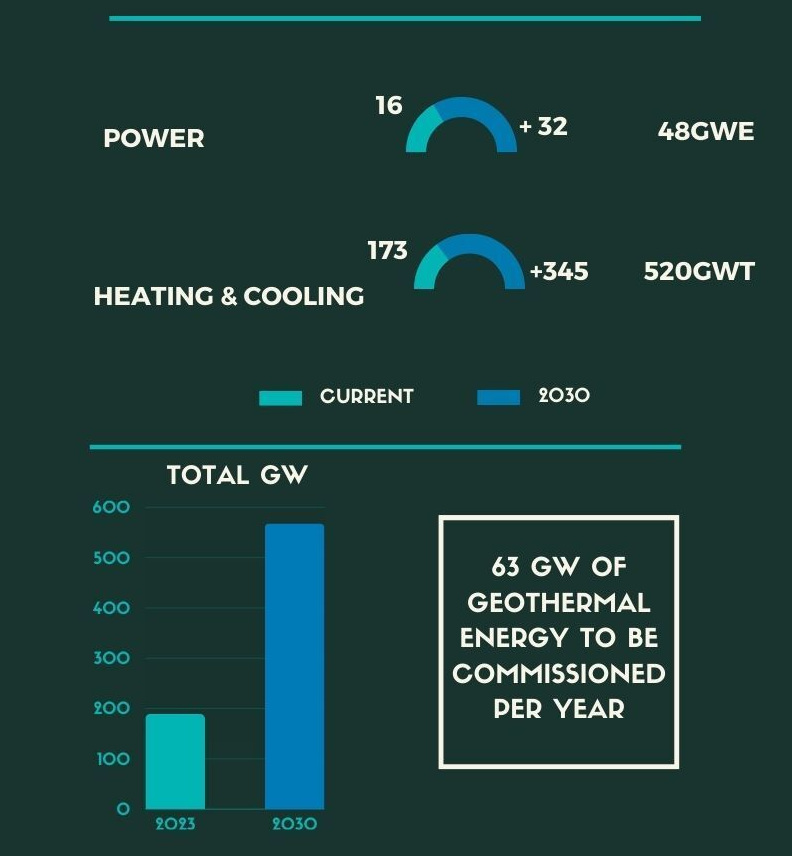
From a regional perspective, the highest potential for future geothermal capacity growth are in Africa, North America, Asia and the Pacific, followed by the Latin America region (for power) and China, followed by North America, Middle East, and Europe (for heating and cooling).
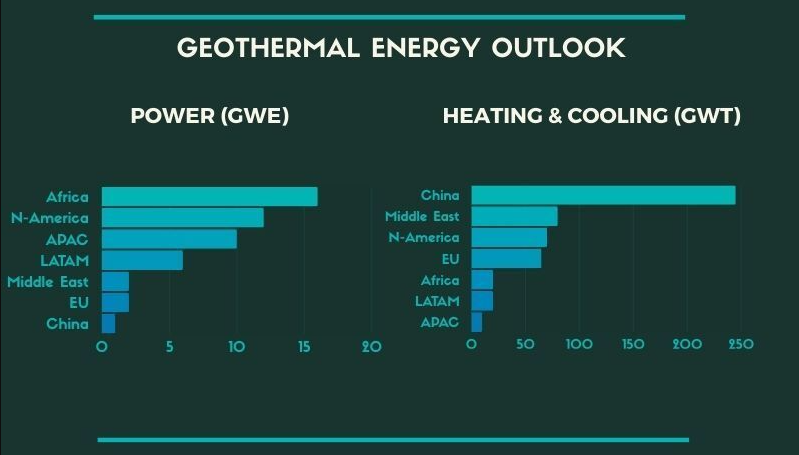
In keeping with the theme of turning ambition to action, the IGA has already established a 5-point agenda for the geothermal sector to achieve its triple up goals. The strategy focuses on Finance, Policies, Innovation, Training, and Standards. The five-point agenda is a succinct representation of the multidisciplinary approach that will be needed to push geothermal to the next level and how it will require the collaborative efforts of developers, tech players, researchers, civic organizations, lobbyists, financial institutions, and policymakers, among others.
Source: Global Renewables Alliance, IRENA, and International Geothermal Association

